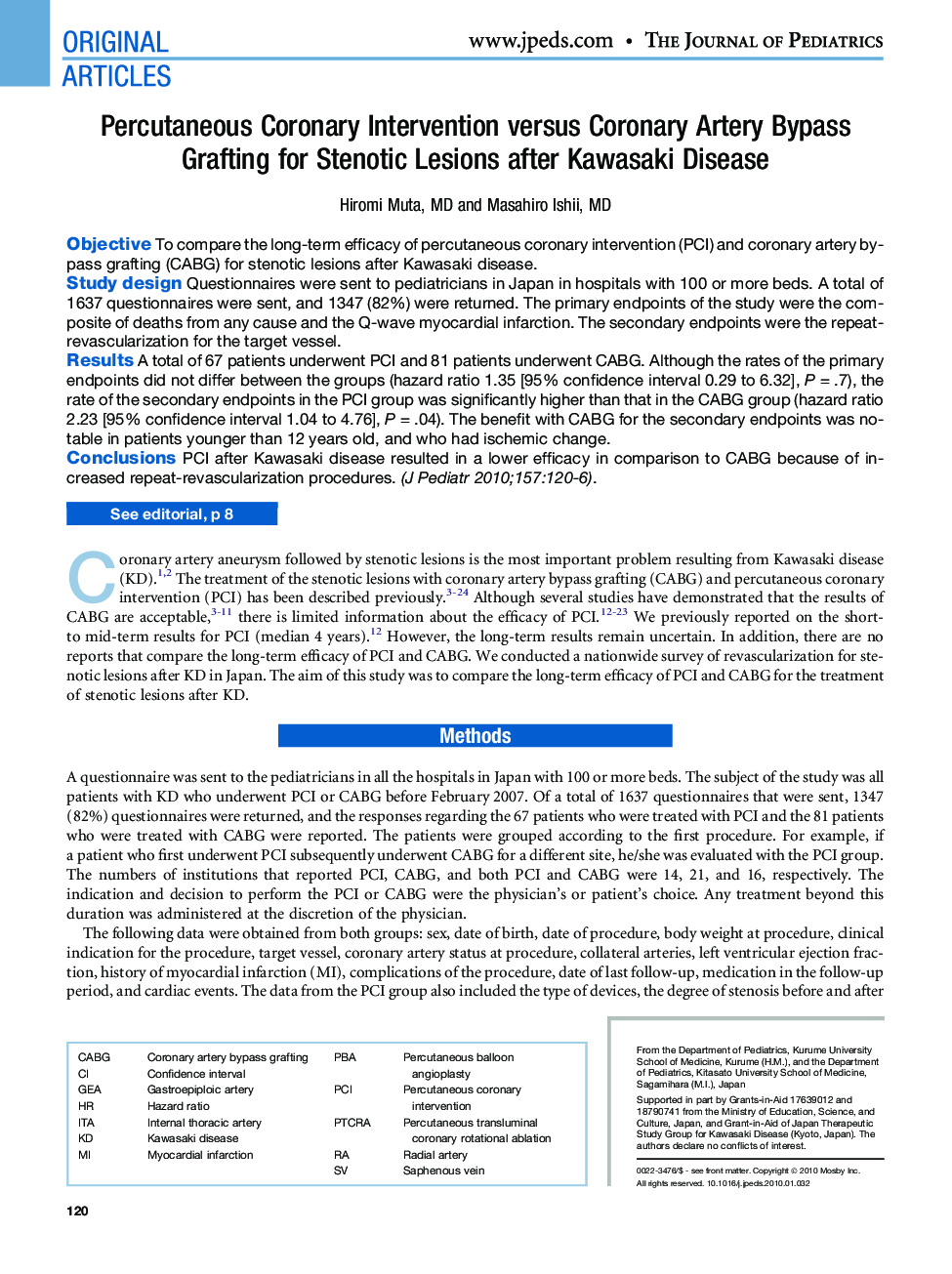| Article ID | Journal | Published Year | Pages | File Type |
|---|---|---|---|---|
| 4165953 | The Journal of Pediatrics | 2010 | 7 Pages |
ObjectiveTo compare the long-term efficacy of percutaneous coronary intervention (PCI) and coronary artery bypass grafting (CABG) for stenotic lesions after Kawasaki disease.Study designQuestionnaires were sent to pediatricians in Japan in hospitals with 100 or more beds. A total of 1637 questionnaires were sent, and 1347 (82%) were returned. The primary endpoints of the study were the composite of deaths from any cause and the Q-wave myocardial infarction. The secondary endpoints were the repeat-revascularization for the target vessel.ResultsA total of 67 patients underwent PCI and 81 patients underwent CABG. Although the rates of the primary endpoints did not differ between the groups (hazard ratio 1.35 [95% confidence interval 0.29 to 6.32], P = .7), the rate of the secondary endpoints in the PCI group was significantly higher than that in the CABG group (hazard ratio 2.23 [95% confidence interval 1.04 to 4.76], P = .04). The benefit with CABG for the secondary endpoints was notable in patients younger than 12 years old, and who had ischemic change.ConclusionsPCI after Kawasaki disease resulted in a lower efficacy in comparison to CABG because of increased repeat-revascularization procedures.
